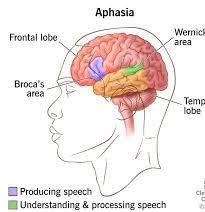A 23-year-old sexually active female presents with white copious discharge and itch and is diagnosed with yeast vaginitis. This condition is caused by overgrowth of which
microorganism?
Candida albicans
Lactobacillus acidophilus
Escherichia coli
Neisseria gonorrhoeae
The Correct Answer is A
Choice A rationale: Yeast vaginitis, commonly known as a yeast infection, is typically caused by an overgrowth of Candida albicans, a type of fungus. Candida albicans overgrowth can lead to symptoms like white, thick discharge and itching in the vaginal area.
Choice B rationale: Lactobacillus acidophilus is a bacterium associated with maintaining vaginal health rather than causing yeast infections.
Choice C rationale: Escherichia coli is a bacteria that can cause different types of infections but are not typically associated with yeast vaginitis.
Choice D rationale: Neisseria gonorrhoeae is a bacteria and does not cause yeast vaginitis despite having similar presentation such as pus discharge per vaginally.
Nursing Test Bank
Naxlex Comprehensive Predictor Exams
Related Questions
Correct Answer is A
Explanation
Choice A rationale: The frontal lobe, specifically Broca's area located in the dominant hemisphere, is responsible for expressive speech. Damage to this area can result in expressive aphasia or difficulty expressing speech.
Choice B rationale: The occipital lobe primarily processes visual information.
Choice C rationale: The temporal lobe is involved in auditory processing and language comprehension.
Choice D rationale: The parietal lobe is involved in spatial perception, attention, and sensory information processing.
 |
Correct Answer is C
Explanation
Choice A rationale: Metformin belongs to the biguanide class of antidiabetic medications.
Choice B rationale: Pioglitazone is a thiazolidinedione used to treat diabetes, not a sulfonylurea.
Choice C rationale: Glipizide is a sulfonylurea used to stimulate insulin secretion in type 2 diabetes.
Choice D rationale: Repaglinide is a meglitinide, another class of drugs that stimulates insulin release.
 |
Whether you are a student looking to ace your exams or a practicing nurse seeking to enhance your expertise , our nursing education contents will empower you with the confidence and competence to make a difference in the lives of patients and become a respected leader in the healthcare field.
Visit Naxlex, invest in your future and unlock endless possibilities with our unparalleled nursing education contents today
Report Wrong Answer on the Current Question
Do you disagree with the answer? If yes, what is your expected answer? Explain.
Kindly be descriptive with the issue you are facing.
